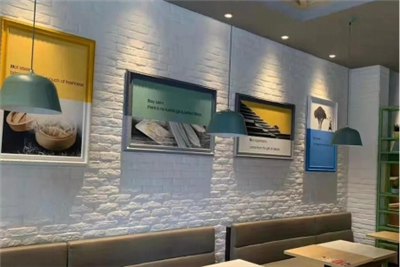PU stone, also known as polyurethane stone, has become a popular material for building and decoration. Its lightweight design, durability, and versatility have made it an appealing choice for many people. But what exactly is PU stone made of, and why has it gained such attention in modern construction? This article explores the components, manufacturing process, and advantages of PU stone to provide a clear understanding of this material.


What Is PU Stone?
PU stone refers to panels or veneers primarily made from polyurethane, a synthetic material known for being strong and flexible. These panels are designed to look like natural stone, providing a stylish yet practical alternative. PU stone is widely used for wall coverings, decorative features, and even furniture accents, offering a balance of affordability and aesthetics.
The Materials Used in PU Stone
PU stone is carefully created with a mix of materials to ensure it meets both functional and decorative needs. Here are the main components:
1. Polyurethane Resin
Polyurethane resin forms the base of PU stone. This material is known for its lightweight nature and strength, which allows it to replicate the texture of natural stone without adding unnecessary weight. It is also resistant to moisture, fire, and general wear, making it a durable option for long-term use.
2. Reinforcement Materials
To enhance the strength and stability of PU stone, manufacturers often include reinforcing materials like fiberglass or mineral fillers. These additions make the panels more resilient and capable of withstanding various conditions without losing their shape or function.
3. Surface Finishes
A surface layer is applied to mimic the appearance of real stone. This coating often includes pigments for color and UV protection to prevent fading. The result is a finish that closely resembles the texture and look of natural stone.
4. Eco-Friendly Additives
Modern PU stone often incorporates recycled materials or other eco-friendly additives to make the product more sustainable. These elements help reduce environmental impact while maintaining high performance.

How PU Stone Is Made
The production process for PU stone is detailed and precise, ensuring the final product is both functional and visually appealing. Here's a step-by-step outline:
1. Creating the Molds
High-quality molds are designed based on real stone textures. Polyurethane resin is poured into these molds to capture the intricate details of natural stone surfaces.
2. Adding Reinforcements
Reinforcing agents like fiberglass are incorporated during the molding process. These materials provide additional strength and help the panels maintain their integrity over time.
3. Curing the Panels
Once molded, the panels are cured under specific conditions to harden the resin and ensure structural stability. This step is essential for creating a durable product.
4. Applying Finishes
A final coating is applied to give the panels their realistic stone appearance. This includes adding pigments, UV protectants, and other weather-resistant features to enhance the panel's performance and look.
Common Uses for PU Stone
PU stone is versatile and can be used in various ways:
Interior Walls: Add character to living rooms, bedrooms, or kitchens with PU stone wall panels.
Exterior Cladding: Its weather-resistant properties make PU stone a good choice for outdoor walls and facades.
Fireplace Surrounds: Enhance the look of a fireplace with PU stone for a warm, inviting feel.
Furniture and Decor: Use PU stone accents on furniture or decorative items for a unique touch.

Comparing PU Stone and Natural Stone
PU stone and natural stone each have their pros and cons. Here's a simple comparison:
| Feature | PU Stone | Natural Stone |
|---|---|---|
| Weight | Lightweight | Heavy |
| Installation | Easy | May require professional help |
| Durability | Long-lasting | Prone to cracking |
| Cost | Affordable | Expensive |
| Environmental Impact | Can include recycled content | Mining can harm ecosystems |
Is PU Stone Right for Your Project?
Whether PU stone is the right choice depends on your project needs. If you value a lightweight, affordable, and visually appealing option, PU stone is worth considering. It works well for both residential and commercial projects, especially for those looking to reduce installation complexity and costs.
For projects requiring the unique authenticity of natural stone, PU stone may not be the perfect substitute. However, its combination of style, practicality, and affordability makes it a strong alternative in many situations.
Conclusion
PU stone is a modern material designed to mimic the appearance of natural stone while offering added benefits. Made from polyurethane resin and reinforced with durable materials, it is a practical, lightweight, and versatile option for various applications. Whether you're renovating your home, upgrading a commercial space, or looking for sustainable materials, PU stone provides an excellent balance of style and functionality.
By understanding what PU stone is made of and how it is manufactured, you can make an informed decision about whether it's the right choice for your project. With its easy installation, cost-effectiveness, and aesthetic appeal, PU stone continues to grow in popularity as a modern solution for timeless designs.

Wood Work Factory in China
Built for Excellence, Designed to Last – Our premium wood panels are the foundation of your next masterpiece. Engineered with precision and delivered with care, we ensure every panel meets your highest expectations. Let's build together!
